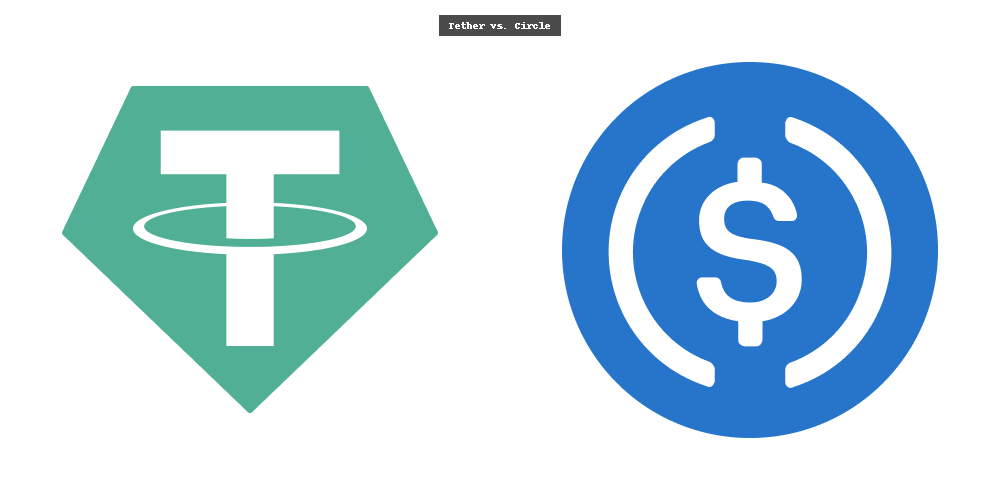Airdrops 2025: From Hype to Utility, How Projects Are Redefining Token Distribution
Imagine it's 2020, you're scrolling through Twitter, now X, and you stumble upon a post about Uniswap's surprise token drop. Suddenly, your wallet, which you used casually for swaps, is credited with 400 UNI tokens, worth thousands at their peak.
It felt like winning the lottery, a stroke of luck for being in the right place at the right time. Stories like this fueled the crypto boom, turning airdrops into the ultimate hype machine. Projects tossed tokens like confetti to bootstrap communities, attract liquidity, and create buzz. But fast forward to 2025, and the narrative has flipped.
No longer just freebies for the masses, airdrops are evolving into sophisticated tools for building lasting value.
They're rewarding real contributions, fostering genuine engagement, and aligning incentives with long-term utility. This isn't just a trend, it's a fundamental shift in how projects distribute tokens, turning hype-driven giveaways into merit-based ecosystems.
In this article, we'll dive into that transformation through a blend of stories, technical breakdowns, and real-world examples.
We'll explore how airdrops started as marketing gimmicks, why they're now emphasizing utility, and what that means for participants like you. By the end, you'll see why 2025 marks the era where airdrops aren't about quick flips, but about creating sustainable networks. Let's start at the beginning.
The Hype Era: Airdrops as the Crypto Gold Rush
Picture the early days of crypto, around 2017 to 2020, when blockchain projects were desperate for attention in a sea of ICOs and whitepapers.
Airdrops emerged as a clever hack to cut through the noise. Instead of spending millions on ads, teams like Stellar or Ontology simply distributed free tokens to anyone who signed up, shared a post, or held a certain asset. It was straightforward, join a Telegram group, retweet a message, get tokens.
The psychology was brilliant, people value what they own, even if it's free, a concept known as the endowment effect.
Technically, these early airdrops were simple. Projects took snapshots of blockchain states, records of wallet balances at a specific block height, and distributed tokens proportionally. For instance, if you held Bitcoin during the Bitcoin Cash fork in 2017, you automatically received BCH.
No effort required beyond holding. But as adoption grew, so did exploitation. Bots flooded social tasks, fake accounts multiplied, and sybil attacks, where one user controls multiple identities, became rampant. Projects like Uniswap in 2020 amplified this, distributing $6.43 billion worth of UNI at its all-time high, but it also set a precedent for retroactive rewards, tokens given for past usage without prior announcement.
By 2023, the hype peaked. Airdrops like Arbitrum and Optimism rewarded early Layer 2 users with millions in value, but the dark side emerged.
Farmers created thousands of wallets to game systems, diluting rewards for genuine users. Data from tools like Dune Analytics showed that up to 30% of airdrop recipients in major drops were sybils, leading to massive sell-offs post-distribution. The result? Token prices crashed, communities fractured, and projects questioned the ROI. Enter 2025, where the focus shifts from quantity to quality.
The Shift to Utility: Rewarding Real Value in 2025
It's August 2025, and the crypto landscape feels different. Regulatory clarity, with the U.S. pushing pro-crypto policies like Bitcoin reserves, has forced projects to prioritize compliance and sustainability. Airdrops are no longer random handouts, they're earned through points systems, on-chain activity, and ecosystem contributions. This evolution addresses the hype era's flaws by emphasizing utility, ensuring tokens go to users who add value, like providing liquidity, testing features, or building communities.
A key mechanism driving this is the points system, a gamified approach where users accumulate points for actions, later convertible to tokens. Unlike early airdrops' one-off tasks, points reward ongoing engagement. For example, projects like LayerZero have allocated 38.3% of their ZRO supply to community distribution across multiple seasons, with hints of more in 2025. CEO Bryan Pellegrino emphasized "real usage only," discouraging farming and focusing on genuine interactions like cross-chain bridging.
Technically, points systems integrate with smart contracts for transparency. Users stake assets, provide liquidity, or complete quests, earning points tracked on-chain. Snapshots still play a role, but they're now layered with filters for sybil resistance, such as minimum activity thresholds or AI-driven behavior analysis. Tools like Hop Protocol or Chainalysis help detect clusters of coordinated wallets. This creates a meritocracy, where top contributors get larger shares, often 10-20% of the total drop.
Another trend is the rise of InfoFi, blending information and finance. Platforms like Kaito turn social engagement into rewards, using AI to score content quality and influence. In 2025, projects allocate 10-15% of airdrops to InfoFi participants, those who create threads, analyses, or memes that drive mindshare. It's not about spamming, it's about value-add, like detailed protocol breakdowns that attract real users. X posts highlight this shift, with users noting, "Airdrops used to feel like lottery wins. Now they feel more like job interviews," rewarding protocols with real fees and active contributors.
Human stories bring this to life. Take a developer who staked in EigenLayer's 2024 drop, earning points for securing restaked assets. In 2025, similar setups in projects like Karak or Symbiotic reward not just staking, but governance votes and bug reports. One X user shared earning a five-figure drop from Starknet by being an early tester, not a farmer. This humanizes the tech, showing airdrops as bridges between projects and passionate users.
Case Studies: Projects Leading the Utility Charge
Let's zoom in on real examples from 2025, where projects are redefining distribution through innovative models.
First, Hyperliquid (HYPE). After a successful 2024 launch, its Season 2 airdrop focuses on perpetual futures traders who generate fees. Users earn points for volume, with sybil filters excluding low-activity wallets. The token hit $35 post-drop, rewarding utility like liquidity provision over hype. Technically, Hyperliquid uses a dynamic market maker (DLMM) for precise liquidity, integrating points with on-chain metrics. One farmer story: a trader who provided $10k in liquidity netted 500 HYPE, worth $17k, by consistently engaging.
Pump.fun on Solana exemplifies meme-to-utility evolution. In 2025, it rewards creators who launch successful memecoins, allocating points for trading volume and community growth. Unlike pure hype drops, Pump.fun's AMM rivals Raydium, turning airdrops into ecosystem boosters. Users creating coins with real traction get boosted allocations, fostering innovation.
Abstract Chain, a ZK-powered L2, introduced XP points in January 2025 for app interactions. Holding PENGU memecoins or Pudgy Penguin NFTs boosts scores, blending NFTs with utility. This gamification encourages exploration, with snapshots rewarding consistent users. A community member on X described farming Abstract as "building a portfolio of badges," highlighting the human fun in technical grinding.
LayerZero's multi-season model stands out. After distributing 8.5% in 2024, 30% remains for 2025 drops, prioritizing cross-chain usage. Technically, it uses oracles for interoperability, with points for bridging assets. Stories abound of users earning thousands by being early adopters, not farmers.
Stablecoin projects like Ethena and Resolv are meta in 2025, rewarding liquidity providers with yields up to 50% APR. Ethena's S3 drop focuses on stakers generating real revenue, using delta-neutral strategies to minimize risks.
AI-integrated drops, like Sentient or Sahara AI, allocate to data contributors. Sentient's $85M-funded drop rewards node operators training models, merging AI utility with tokens.
These cases show a pattern: utility trumps hype, with technical layers ensuring fairness.
Technical Deep Dive: Mechanisms Behind Utility-Focused Airdrops
To appreciate the shift, let's unpack the tech. Modern airdrops use layered systems for distribution.
- Points and Badges: Built on ERC-20 or custom contracts, points are non-transferable tokens accrued via oracles tracking actions. Sympy math example: If a user provides liquidity L, earning points P = L * t * r, where t is time, r is rate. To solve for max P, integrate over time, but practically, contracts use timestamps.Explanation: Start with base liquidity L. Multiply by duration t (e.g., days staked). Apply rate r (e.g., 0.1 points/day per $1). P = L * t * r. For closed math questions, derive via integration if continuous, but discrete in code.
- Snapshots and Filters: Using blockchain explorers like Etherscan, snapshots capture states. Filters apply min_replies:N or min_faves:N from X data, or on-chain min_retweets. Math: Filter sybils by clustering wallets with similar transaction graphs, using graph theory like adjacency matrices.
- Sybil Resistance: AI models score behaviors, e.g., regression on engagement metrics. If score < threshold (0.18), exclude.
- Multi-Chain Integration: Tools like Caldera enable rollups, distributing across chains.
Human angle: These aren't cold algorithms, they're designed by teams who've been burned by farmers, aiming for equitable shares.
Challenges and Solutions in the Utility Era
Despite progress, challenges persist. Sybils still lurk, with industrial farms using VPNs. Regulations demand KYC for drops, as seen in U.S. policies. Volatility post-drop remains, with dumps eroding value.
Solutions: Projects like Genome Protocol use "Splice" engines for behavior tracking, rewarding consistency over volume. Vesting schedules lock tokens, e.g., 6-12 months cliffs. Community governance lets holders vote on distributions.
On X, users lament the "job interview" feel, but agree it's fairer. The human cost, time spent farming, is offset by potential rewards, but burnout is real.
The Future: Airdrops in a Mature Ecosystem
Looking ahead, 2025 trends point to deeper integration. InfoFi dominates, with Kaito's mindshare farming. AI agents, like in Aethir, automate tasks for drops. Stablecoins and RWAs blend real-world utility, with drops for yield farmers.
Discord and X become hubs, rewarding lurkers and creators. Projects like Berachain reward "yappers" for community building.
In 2030, airdrops might be fully decentralized, governed by DAOs. For now, 2025 is the pivot point.
Conclusion
From Uniswap's hype to Hyperliquid's utility, airdrops have matured.
They're tools for building, not just buzzing. As a participant, focus on value, engage genuinely, and reap rewards.
The stories of 2025 will be about builders, not flippers. Be a genuine contributor, the future is utility-driven.



Comments ()